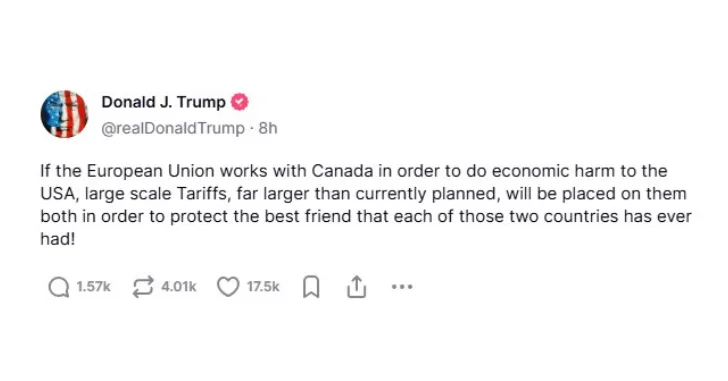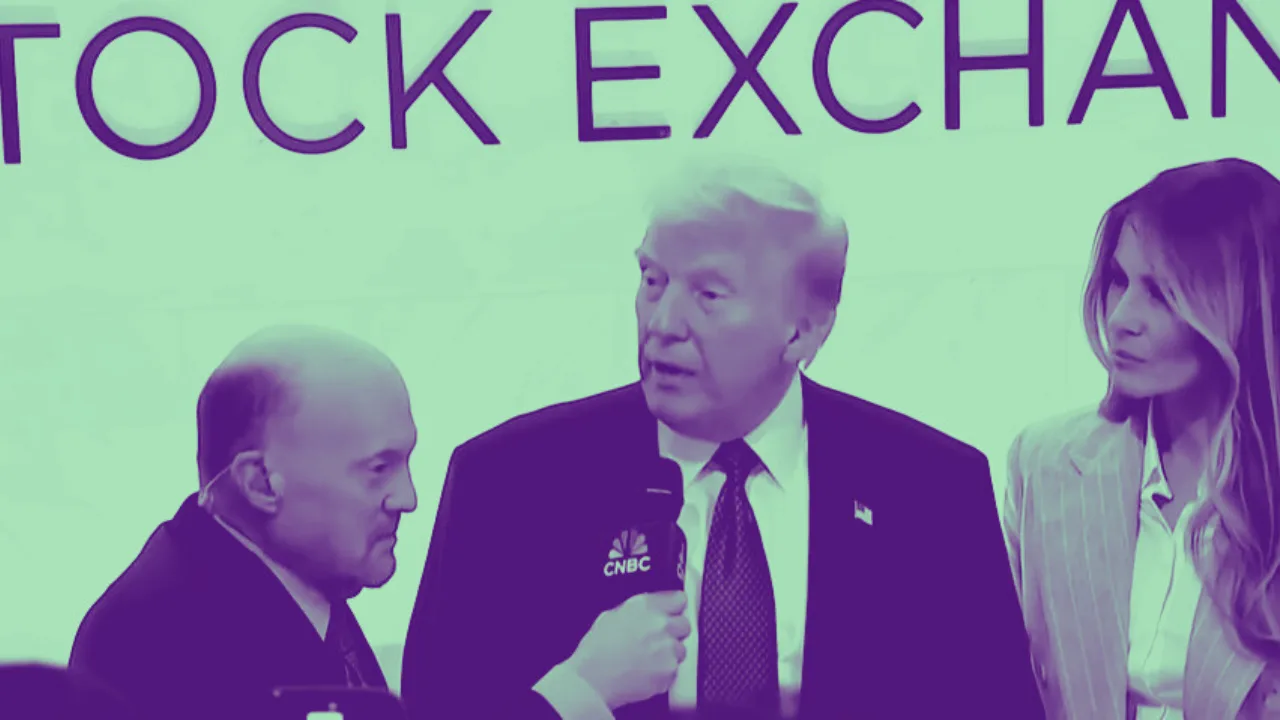In a move sending shockwaves through the global auto industry and financial markets, President Donald Trump announced sweeping new tariffs on all imported automobiles and select auto parts. The 25% tariff, set to take effect on April 2, 2025, has already rattled markets and sparked sharp reactions from Canada and the European Union. But Trump didn’t stop there.
In a fiery Truth Social post published early Wednesday, Trump warned that “far larger tariffs” could be imposed if Canada and the EU coordinate efforts to harm the U.S. economy. The message comes on the heels of condemnation from Canadian Prime Minister Mark Carney and EU Commission President Ursula von der Leyen, both of whom blasted the new tariffs as economically reckless and politically provocative.
What the Tariffs Include
Under the new policy:
- A 25% tariff will apply to all foreign-made vehicles, including sedans, SUVs, pickup trucks, minivans, and cargo vans.
- Select imported auto parts, such as engines, transmissions, and electrical systems, will also face the same 25% duty.
The Trump campaign has framed the tariffs as a “national security measure” designed to protect American industry, reduce foreign dependency, and bring back manufacturing jobs to U.S. soil. According to administration estimates, the move could generate up to $100 billion in new federal revenue.
Market Reaction: Auto Stocks Take a Hit
Investors didn’t take the news lightly. Shares of major U.S. and international automakers plunged on the news:
- Ford (F) and General Motors (GM) each dropped over 5% in intraday trading.
- Even Tesla (TSLA), which builds most of its cars domestically, saw a dip due to concerns about retaliation from Europe and Canada.
- International automakers with large U.S. sales footprints—like Toyota, BMW, and Volkswagen—also fell sharply on European exchanges.
Jim Farley, CEO of Ford, was blunt:
“A 25% blanket tariff threatens to unravel our integrated North American supply chain and could drive vehicle prices sky-high for American families.”
Global Fallout: Allies Now Adversaries?
The tariffs have already drawn a sharp rebuke from America’s closest allies.
Canada’s Prime Minister Mark Carney called the policy a “direct attack on Canadian autoworkers” and hinted at retaliatory trade measures.
The European Union issued a more measured but firm response, expressing “deep regret” over the decision and warning that the EU is prepared to “defend its economic interests.”
Then came Trump’s escalation.
In a post to Truth Social, Trump wrote:
“If the European Union and Canada work together to harm the U.S. economy, we will respond with far larger tariffs than currently planned. America First means American workers come first.”
The post signals that the former president is willing to spark a full-blown trade war, even with historic allies, if it supports his platform of economic nationalism.
What This Means for Investors
The Trump tariffs and the escalating trade threats aren’t just political—they carry serious market implications for investors:
1. Auto Sector Volatility
Expect continued volatility in auto stocks. While domestic producers may benefit from reduced foreign competition, supply chain disruptions and higher input costs could offset those gains.
2. Consumer Spending Impact
Higher vehicle prices caused by tariffs could slow consumer demand—particularly for lower- and middle-income buyers. This could ripple into auto lenders, dealerships, and parts suppliers.
3. Broader Trade Tensions
If the EU or Canada retaliate, we could see cross-sector tariffs that affect agriculture, aerospace, and technology—echoing the 2018-2019 U.S.-China trade war.
4. Safe Havens and Dollar Dynamics
Trade uncertainty often leads to increased demand for gold, the U.S. dollar, and Treasury bonds. Investors may want to hedge exposure to trade-sensitive sectors with safe haven assets or emerging market short plays.
5. Election-Year Policy Risk
This development is a reminder that 2025 is an election year. Markets should expect more policy-driven volatility as Trump and Biden (or Harris) stake out contrasting economic visions.
Final Thoughts
The Trump auto tariffs are more than just a policy proposal—they’re a clear signal of the direction Trump intends to take U.S. trade policy if reelected. For investors, this marks the return of trade-related risk as a front-burner issue. With global supply chains still fragile from the pandemic and geopolitical tensions already high, the prospect of a new transatlantic trade war could reshape market dynamics for months to come.
Smart investors will watch not just what Trump says—but how allies and adversaries respond. In this volatile climate, political headlines are market signals, and every tariff tweet could move billions.





